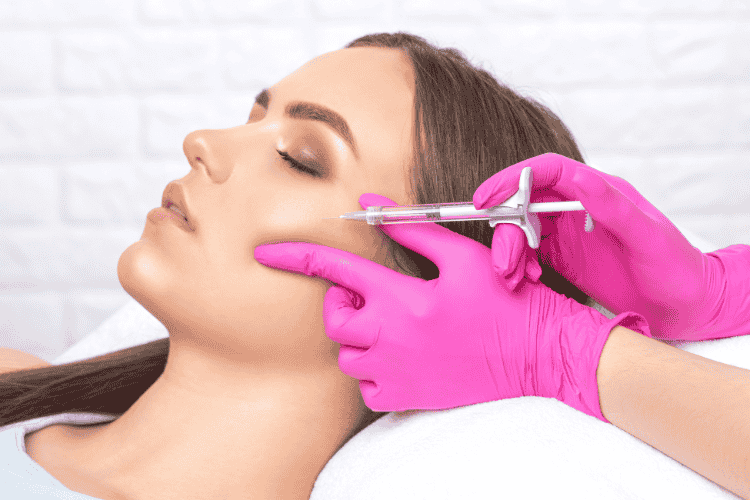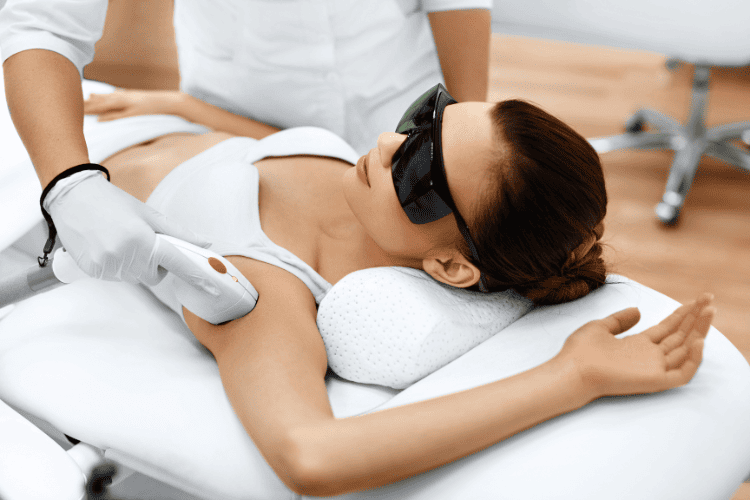Everything You Need to Know About Hyaluronic Acid Fillers
From subtly enhancing lip fillers to smoothing away lines with deep wrinkle fillers, hyaluronic acid fillers offer a versatile range of possibilities.
If you're exploring ways to revitalize your look and are considering dermal fillers at a med spa near you, read on for an overview of hyaluronic acid fillers, including what they are, how they work, and what you can anticipate from the treatment.
What Are Hyaluronic Acid Fillers?
Hyaluronic acid is a naturally occurring sugar molecule found abundantly in our skin, connective tissues, and eyes. Its primary function is to attract and hold onto water, acting like a sponge to keep tissues hydrated, plump, and supple. Unfortunately, as we age, our natural production of HA diminishes, leading to volume loss, dryness, and the formation of wrinkles. Hyaluronic acid fillers are gel-like substances that closely mimic the HA found naturally in the body. These fillers are specifically formulated for cosmetic use, designed to be injected into the skin to restore volume, smooth lines, and enhance facial contours. HA fillers are biodegradable, meaning they are gradually and safely absorbed by the body over time. Several FDA-approved brands, including Juvederm, Restylane, and Belotero, dominate the market, each with unique formulations designed for specific purposes, varying in consistency, elasticity, and longevity.How Do HA Fillers Work to Rejuvenate Your Look?
As we age, we lose subcutaneous fat and bone density, leading to a hollowed or sunken appearance. HA fillers effectively replace this lost volume, lifting and contouring areas like the cheeks and temples, and restoring a more youthful fullness. Because HA attracts water, it also brings deep hydration to the treated areas. Secondly, whether it's deep nasolabial folds, the downturned lines from your mouth to your chin, or general skin depressions, HA fillers can effectively "fill" and smooth these areas, creating a more even skin surface. Beyond just filling, HA fillers are powerful tools for sculpting. They can redefine the shape of the cheeks, sharpen the jawline, add sensual volume to the lips, and even reduce the appearance of under-eye hollows.What Areas Are HA Fillers Most Commonly Used For?
- Lips
- Cheeks
- Smile Lines
- Marionette Lines
- Under-Eye Hollows (Tear Troughs)
- Chin and Jawline Sculpting
- Fine Lines Around the Mouth (Perioral Lines)
Benefits of Hyaluronic Acid Fillers
Immediate Results with Minimal Downtime
Unlike surgical options, you can often see the effects of HA fillers right after your appointment, with any swelling subsiding within a few days.Natural Look and Feel
When skillfully injected, HA fillers integrate smoothly into the skin, providing results that look and feel natural, enhancing your features without appearing "done."Non-Permanent, Allowing Adjustments Over Time
Since they are biodegradable, the results are not permanent. This is a significant benefit, as it allows for adjustments to your aesthetic goals over time and eliminates the worry of being stuck with a look you don't love.Tailored Options
With many different types of HA fillers available, a skilled injector can choose the ideal product for subtle refinement or dramatic contouring, precisely matching your desired outcome.Reversible
A unique and comforting advantage of HA fillers is that they can be dissolved with an enzyme called hyaluronidase if a patient is unhappy with the results or if a complication arises.What to Expect During Your Treatment
Your journey with hyaluronic acid fillers will typically begin with a thorough consultation and treatment planning session. This is where you discuss your aesthetic goals, and the injector evaluates your facial anatomy to create a personalized plan. During the procedure, your provider will likely apply a numbing cream to the treatment area or use fillers that already contain lidocaine to ensure your comfort. The actual injection process uses very fine needles or blunt-tipped cannulas to precisely place the filler. The session length is typically brief, ranging from 20 to 45 minutes, depending on the number of areas being treated.Recovery and Aftercare
Immediately after your treatment, it's common to experience some redness, swelling, and bruising at the injection sites. These side effects are usually mild and resolve within a few days to a week. To optimize your recovery, your provider will offer specific aftercare tips, like:- Avoid alcohol and heavy exercise for 24–48 hours post-treatment, as these can increase swelling and bruising.
- Avoid applying pressure to the treated areas, especially for cheek or jawline fillers, to let the product settle.
- Stay hydrated and gently cleanse your face.




